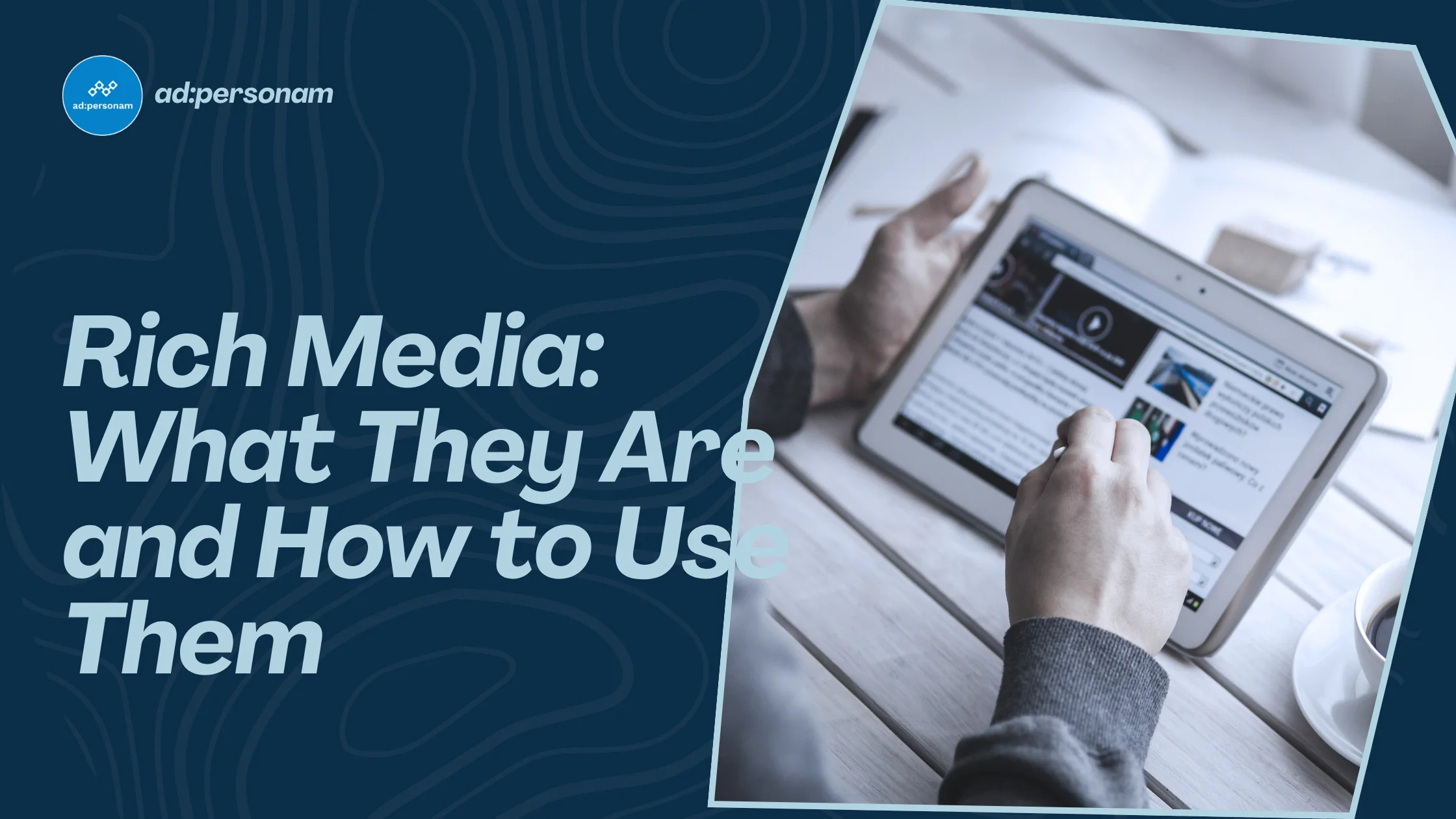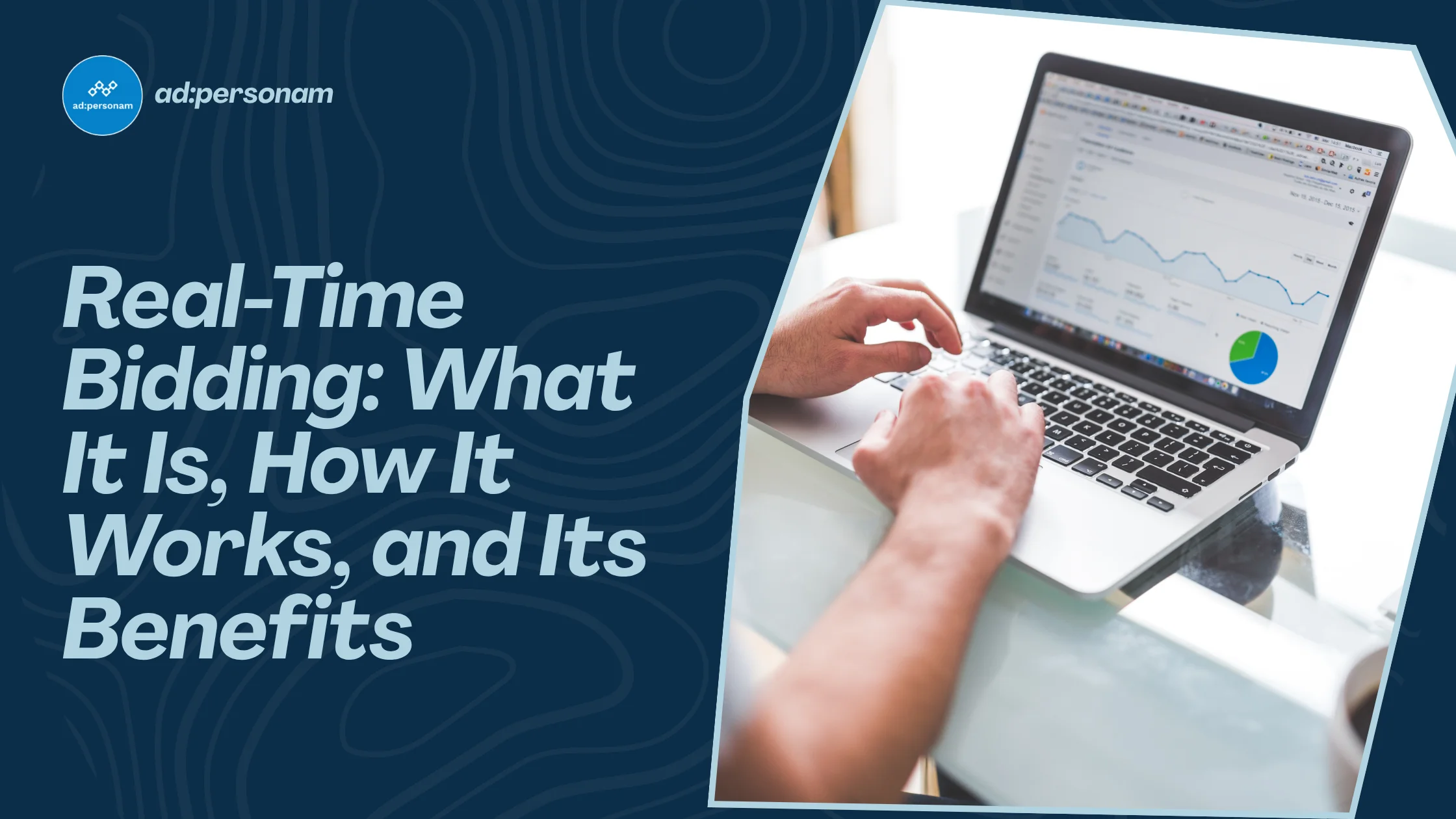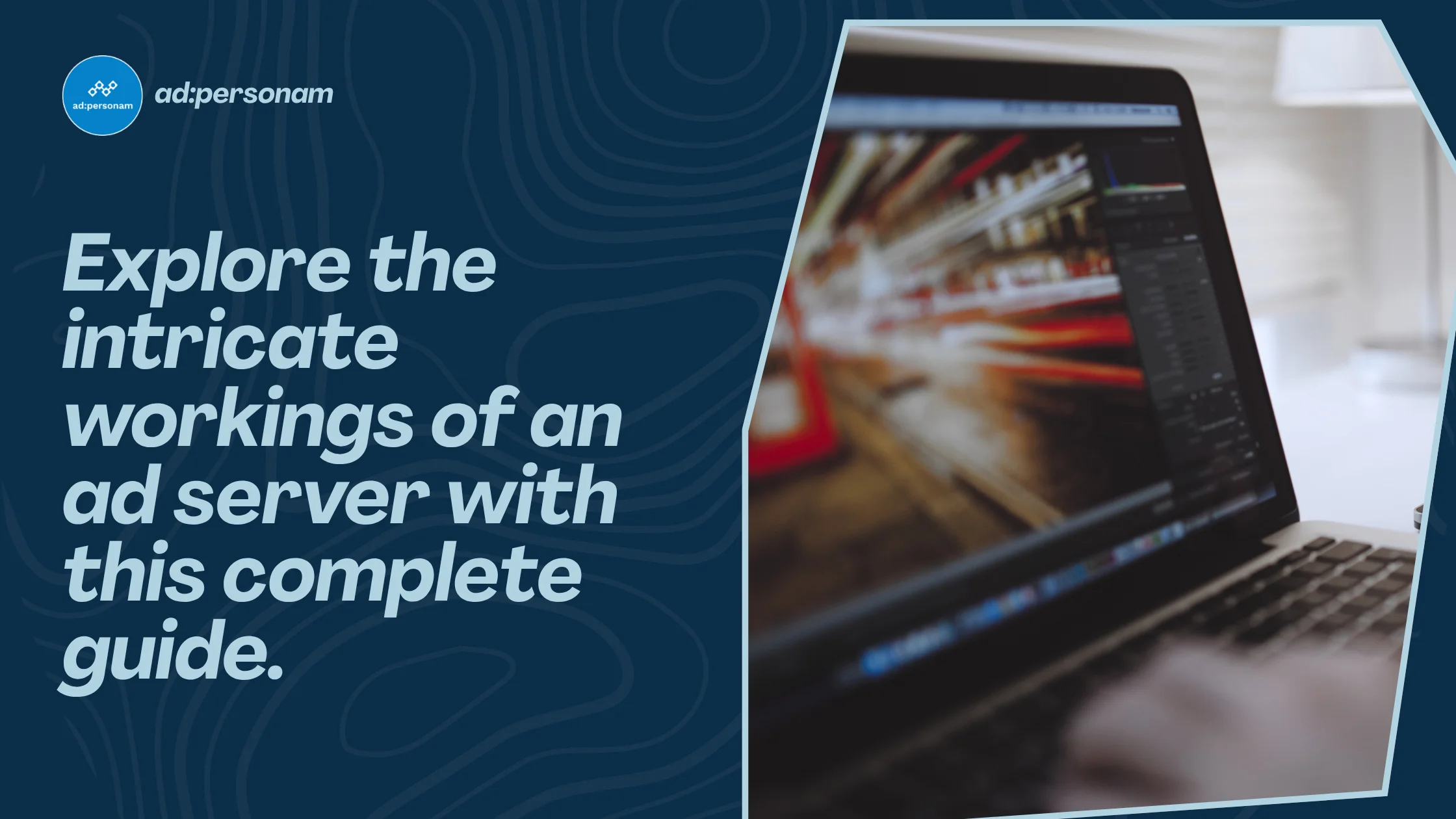Rich Media Advertising: Formats, Benefits & Best Practices for 2025
Discover rich media advertising formats, benefits, and best practices. Create engaging campaigns with ad:personam AI-powered DSP platform.
Contents
- What Is Rich Media Advertising?
- Key Characteristics of Rich Media Ads
- Why Choose Rich Media Advertising
- The Benefits of Rich Media Ads
- The Drawbacks of Rich Media Ads
- Rich Media Ad Formats
- Rich Media vs. Standard Ads
- Examples of Rich Media Ads
- Where to Position Rich Media Ads
- Where and How to Create Rich Media Ads
- Best Practices for Using Rich Media
- Measurement Metrics for Rich Media Ads
- How to Integrate Rich Media Ads into Programmatic Marketing Strategy
- Rich Media FAQs
- Want to Experiment with Rich Media in Your Next Campaign?

Capturing user attention in digital marketing has never been more challenging—or more rewarding. The evolution of ad formats has led to increasingly dynamic and engaging solutions, and rich media stands at the forefront of this transformation.
In this guide, we'll explore what rich media is, its formats, benefits, drawbacks, and how to integrate them effectively into your programmatic advertising strategy.
What Is Rich Media Advertising?
Rich media represents advanced digital ad formats that go far beyond the static banner. They integrate multimedia elements like video, audio, animations, expandable effects, sliders, interactive games, and calls to action. Unlike standard display ads, the advantage lies in interactivity: rich media encourages users to engage, explore, click, and in many cases, even have fun.
Key Characteristics of Rich Media Ads
One of rich media's primary features is interactivity. Users become active participants. These ads are often expandable—growing or changing appearance on hover or click—delivering substantial customization. Thanks to advanced tracking, they enable monitoring of specific metrics like dwell time, interactions, active views, and much more.
Why Choose Rich Media Advertising
Incorporating rich media into your advertising strategy means choosing engagement. These formats capture attention in a crowded content landscape with style. They're capable of creating stronger connections between brand and user through interaction, delivering a more immersive experience than static ads.
The Benefits of Rich Media Ads
Rich media offers multiple advantages across different aspects of corporate advertising and brand awareness. Here are the main ones:
Greater User Engagement
Users actively participate in the experience and become curious to discover what the ad reveals. This makes it far more engaging than a static banner.
Improved Advertising Performance
Rich media can deliver higher CTR (Click-Through Rates), increase dwell time, and drive conversions thanks to the format's engaging nature.
More Effective Branding with Rich Media
By providing greater brand viewability, rich media amplifies brand identity, telling stories through visual and audio creativity.
Creative Flexibility and Innovation in Ad Formats
You can create custom formats, experiment with animated graphics, smooth transitions, and special effects.
Optimized Targeting Through Collected Data
Through interaction, you collect high-value behavioral data, useful for better audience segmentation and real-time campaign optimization.
More Immersive User Experience
Users feel like part of the content, not just recipients. This increases satisfaction and positive brand perception.
The Drawbacks of Rich Media Ads
Rich media ads also have disadvantages, primarily related to tools or the nature of this advertising type. Here are the main ones:
Longer Loading Times
Being heavier than static formats, rich media can negatively impact loading time, affecting user experience.
Compatibility Issues with Devices and Browsers
Not all devices or browsers perfectly support interactive content, especially if not properly optimized.
Potential User Distractions
An overly elaborate ad may distract from the main message or seem intrusive.
Greater Technical Complexity in Creation
They require specific skills or adequate platforms to create, manage, and monitor their performance.
Bandwidth Impact
Especially on mobile, a heavy ad can slow connection or consume significant data.
Rich Media Ad Formats
Rich media ad formats are numerous and can be customized in every aspect. Here are the main ones:
Rich Media Banners
Similar to traditional banners but with animations, video, or effects activated on hover.
Interstitial Ads
Full-screen ads appearing between two pieces of content or during loading. They're highly visible, positively impacting brand viewability.
Expandable Ads
Starting in compact form, they expand through user interaction. This allows displaying more content without initially occupying too much space.
Pushdown Ads
These scroll downward, pushing page content. They create surprise and enhance brand viewability.
Slider Ads
Allow users to browse multiple pieces of content (products, images, offers) within a single ad space.
Interactive Video Ads
Combine video's narrative power with interactive actions like quizzes, multiple choices, or dynamic calls to action.
Gamified Ads
Engage users with mini-games or challenges, often brand-related. They increase engagement in an entertaining way.
Rich Media vs. Standard Ads
Unlike static ads, rich media generates significantly higher engagement through interaction and experience. Performance is generally superior in terms of CTR, conversions, and view time. On the flip side, they require more technical skills, thorough testing, and greater initial investment, but the audience impact is decidedly more memorable.
Examples of Rich Media Ads
Here are examples of rich media ads in sectors well-suited to this advertising type. In automotive, a rich media campaign might feature a 3D car configurator users can customize. In fashion, an interactive slider with seasonal outfits lets users discover new looks. In tech, a video ad with clickable interactions enables exploring smartphone features. All these examples can be managed through DSP platforms like ad:personam, offering integrated tools to create, test, and optimize every creative.
Where to Position Rich Media Ads
Rich media finds space across multiple digital channels. They can be published on editorial or e-commerce websites, attracting visible attention. In mobile apps, they integrate smoothly into user experience while offering relevant content. On social media, they become high-shareability interactive experiences. On Connected TV (CTV), they reach audiences on large screens, while when managed through DSP platforms, they can be planned, segmented, and managed with complete autonomy.
Where and How to Create Rich Media Ads
Various tools exist for creating rich media: from Google Web Designer to more complex platforms like Adform Studio, leveraging AI advertising capabilities. Those using a DSP can upload and manage their creatives intuitively, even without advanced technical skills. Thanks to AI system integration, you can automate testing, optimization, and reporting.
Best Practices for Using Rich Media
To achieve concrete results, it's essential to prioritize user experience. Visual elements must be harmonious, engaging, and non-intrusive. Loading speed should always be optimized, especially in mobile environments. Testing different versions (A/B testing) helps identify which creative performs best. Interactive metrics must be constantly monitored to adapt strategy in real-time. Design every format with "mobile-first" logic and offer users added value through useful content or entertaining experiences.
Measurement Metrics for Rich Media Ads
Beyond classic CTR, rich media enables monitoring advanced metrics like interaction time, video completion rates, engagement rate, and active view count. Conversion rate is also a key indicator, as are actions taken within the ad.
How to Integrate Rich Media Ads into Programmatic Marketing Strategy
Rich media integrates perfectly into programmatic campaigns. DSP platforms like ad:personam enable audience segmentation based on behavior, automated creative optimization, and detailed performance measurement. Artificial intelligence helps improve results in real-time, while the intuitive interface allows even less experienced users to create and manage campaigns.
Rich Media FAQs
What is rich media?
Rich media consists of interactive digital ads combining elements like video, audio, animations, and dynamic content. Unlike static banners, they actively engage users, improving experience and communication effectiveness. With ad:personam, you can manage them independently thanks to an intuitive interface supported by artificial intelligence, useful for AI advertising as well.
What are rich media formats?
The most common include: expandable banners, full-screen interstitials, interactive videos, pushdowns, sliders, and carousels. All these formats are available on ad:personam and configurable even without technical skills.
What are the benefits of rich media?
Greater engagement, higher CTR, memorable visual experiences, the ability to collect advanced data, and optimize content in real-time through AI.
Want to Experiment with Rich Media in Your Next Campaign?
With ad:personam, you can do it simply and with personalization. Discover how to leverage rich media to give your programmatic campaigns an extra edge. Sign up today on adpersonam.io and discover how to make rich media ads effective!
Sign up now to our DSP platform!
You might also like

Real Time Bidding: What It Is, How It Works, and Benefits for Advertisers and Publishers
Discover what real time bidding is, how it works, and the benefits it offers advertisers and publishers in programmatic advertising.

Ad Server: Complete Guide to Advertising Servers, Technology & Selection
Complete guide to ad server functionality. Discover the benefits of advertising servers and how to implement them for better campaign results.